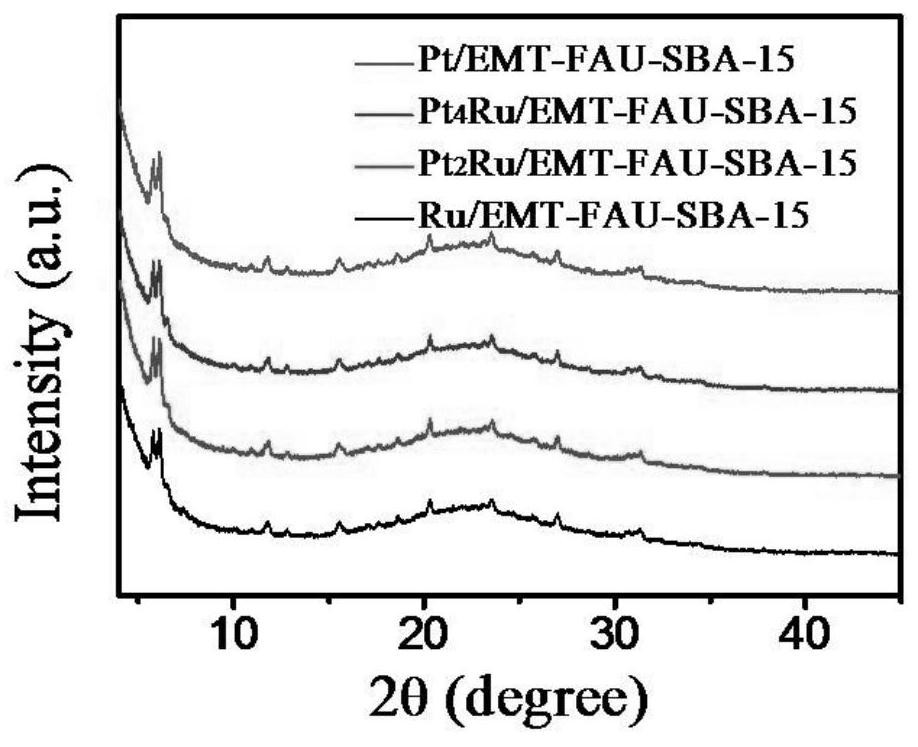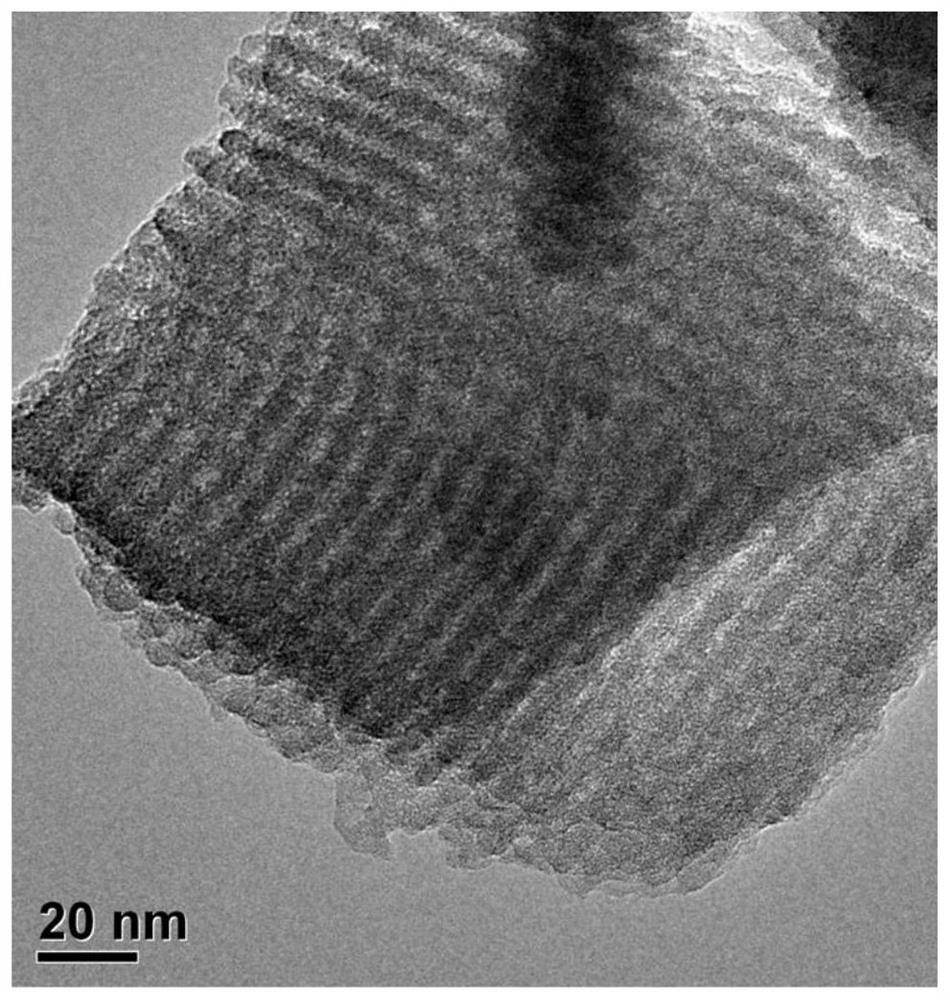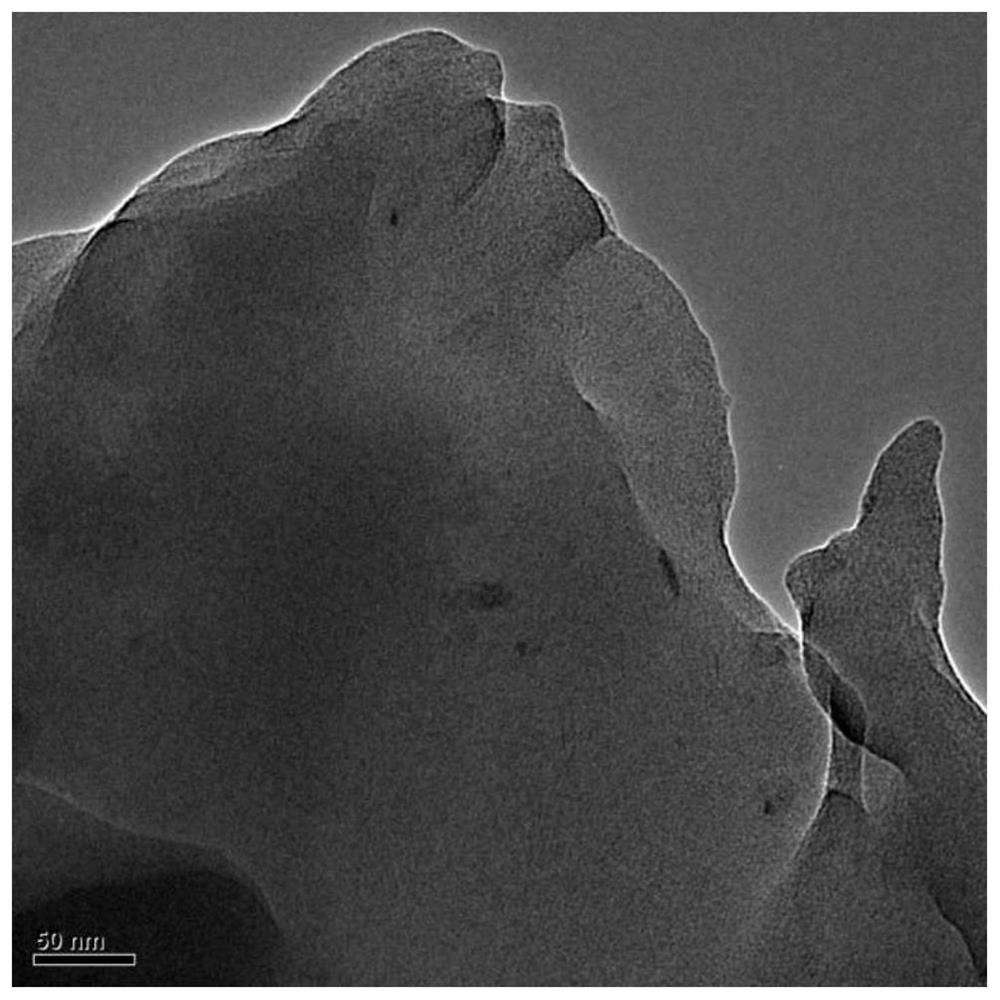A method for degrading p-nitrophenol reduction
A technology of stirring and dissolving p-nitrophenol, which is applied in chemical instruments and methods, reduced water/sewage treatment, chemical/physical processes, etc., can solve the problems of multi-level pore synthesis and increase the temperature, and achieve high reactive sites effect of density
- Summary
- Abstract
- Description
- Claims
- Application Information
AI Technical Summary
Problems solved by technology
Method used
Image
Examples
Embodiment 1
[0025] Pt 2 The preparation method of Ru / EMT-FAU / SBA-15 catalyst:
[0026] A. Add 0.35g sodium hydroxide, 1.04g sodium aluminate, 1.0g 18-crown-6, 0.034g sodium phosphate, 4.74g deionized water and 6.3g silica sol into the reaction kettle and stir at 25 degrees Celsius dissolved as solution I;
[0027] B. Add 0.12g 3-mercaptopropyltrimethoxysilane, 0.15g sodium hydroxide and 2g deionized water into the beaker and stir to dissolve, then add 1.8mL of H 2 PtCl 6 (100mol / L) and 0.9mL of RuCl 3 solution (100mol / L), as solution II;
[0028] C. Add solution II dropwise to solution I and stir for 3 hours, then age at 25 degrees Celsius for 24 hours, then transfer to a reaction kettle and crystallize at 100 degrees Celsius for 96 hours to obtain a PtRu / EMT-FAYU zeolite microcrystalline emulsion;
[0029] D. Add 2g of P123 organic matter to the hydrochloric acid solution to dissolve and disperse, add dropwise the tetraethyl orthosilicate of 4.28g and the PtRu / EMT-FAU zeolite microc...
PUM
 Login to View More
Login to View More Abstract
Description
Claims
Application Information
 Login to View More
Login to View More - R&D
- Intellectual Property
- Life Sciences
- Materials
- Tech Scout
- Unparalleled Data Quality
- Higher Quality Content
- 60% Fewer Hallucinations
Browse by: Latest US Patents, China's latest patents, Technical Efficacy Thesaurus, Application Domain, Technology Topic, Popular Technical Reports.
© 2025 PatSnap. All rights reserved.Legal|Privacy policy|Modern Slavery Act Transparency Statement|Sitemap|About US| Contact US: help@patsnap.com



